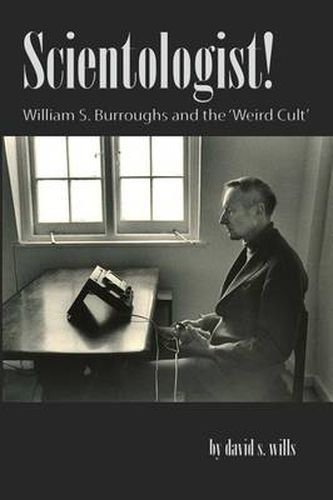Readings Newsletter
Become a Readings Member to make your shopping experience even easier.
Sign in or sign up for free!
You’re not far away from qualifying for FREE standard shipping within Australia
You’ve qualified for FREE standard shipping within Australia
The cart is loading…






This title is printed to order. This book may have been self-published. If so, we cannot guarantee the quality of the content. In the main most books will have gone through the editing process however some may not. We therefore suggest that you be aware of this before ordering this book. If in doubt check either the author or publisher’s details as we are unable to accept any returns unless they are faulty. Please contact us if you have any questions.
Scientology is largely overlooked in major texts about the life and work of William S. Burroughs, author of some of the most notorious literature of the 20th century. Its importance in the creation of the Cut-up Method and Burroughs’ view of language as a virus is undermined by the omission of details regarding his interest in the religion over the course of a decade - certainly the most creatively fertile period of his life. Instead, biographers and critics tend to focus on his other obsessions in the realm of fringe science, and on the period during the early 1970s when Burroughs left the religion and began a public crusade against it.
However, Burroughs’ involvement with L. Ron Hubbard’s organization was no fleeting interest; he was a fully-fledged member and even obtained the rank of ‘clear’ - a prestigious achievement for a Scientologist. Scientology ultimately inspired the plot, the structure, and various elements of some of Burroughs’ most important works, including The Soft Machine and The Wild Boys. His fascination was genuine, and his progress through the hierarchical structure of the Church signals a dedication that he would later downplay after being excommunicated in 1969.
Now, for the first time, his life and literature are reexamined in the light of newly uncovered information about Burroughs’ fascination with this ‘weird cult, ’ as he once described it.
$9.00 standard shipping within Australia
FREE standard shipping within Australia for orders over $100.00
Express & International shipping calculated at checkout
This title is printed to order. This book may have been self-published. If so, we cannot guarantee the quality of the content. In the main most books will have gone through the editing process however some may not. We therefore suggest that you be aware of this before ordering this book. If in doubt check either the author or publisher’s details as we are unable to accept any returns unless they are faulty. Please contact us if you have any questions.
Scientology is largely overlooked in major texts about the life and work of William S. Burroughs, author of some of the most notorious literature of the 20th century. Its importance in the creation of the Cut-up Method and Burroughs’ view of language as a virus is undermined by the omission of details regarding his interest in the religion over the course of a decade - certainly the most creatively fertile period of his life. Instead, biographers and critics tend to focus on his other obsessions in the realm of fringe science, and on the period during the early 1970s when Burroughs left the religion and began a public crusade against it.
However, Burroughs’ involvement with L. Ron Hubbard’s organization was no fleeting interest; he was a fully-fledged member and even obtained the rank of ‘clear’ - a prestigious achievement for a Scientologist. Scientology ultimately inspired the plot, the structure, and various elements of some of Burroughs’ most important works, including The Soft Machine and The Wild Boys. His fascination was genuine, and his progress through the hierarchical structure of the Church signals a dedication that he would later downplay after being excommunicated in 1969.
Now, for the first time, his life and literature are reexamined in the light of newly uncovered information about Burroughs’ fascination with this ‘weird cult, ’ as he once described it.